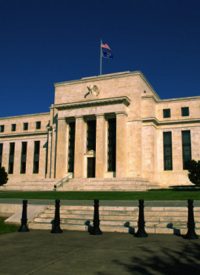
Last summer, a federal judge ruled that the Federal Reserve must disclose the identities of firms that received any portions of the over-$2 trillion in bailout money back in 2008. This week, the Fed is preparing to go to court to protect its secrets.
On January 11, the Board of Governors of the Federal Reserve filed an appeal with the U.S. Court of Appeals in Manhattan, seeking to block the August ruling by U.S. District Judge Loretta Preska, as reported by Bloomberg.com.
Following the failure of Lehman Brothers on September 15, 2008, which threatened to precipitate a domino effect of collapsing financial institutions, the Fed relaxed its lending standards. Its balance sheet doubled. It began extending credit to companies other than banks. By November 23, total Federal Reserve lending had reached $2.14 trillion.
Bloomberg LP (parent organization of Bloomberg.com) originally filed its Freedom of Information Act lawsuit last April following the Fed’s refusal to name the financial firms it lent to, disclose the specific amounts lent to each, or identify the assets used as collateral. The Fed has defended its actions as necessary to prevent a complete meltdown of the country’s financial and banking system in the wake of the worst crisis since the Great Depression. Congress had approved $700 billion to bolster banks (the Troubled Asset Relief Program, or TARP), and the total amount lent out by the federal government in this effort had reached $12.8 trillion as of March 31, 2009, according to Bloomberg. This total includes the $2.14 trillion on the Fed’s balance sheet that remains unaccounted for.
Such amounts are unprecedented; the effort itself has been called "an unprecedented and highly controversial use of public money." No previous bailouts have even come close to such amounts, which are virtually unimaginable to ordinary people. Count back a billion seconds, and you will be back to slightly over 30 years ago. Count back a trillion seconds, and you will be well before the beginning of recorded history.
Bloomberg’s lawyers reasoned that such staggering levels of lending give the public a right to know where the money went, and Judge Preska agreed. Her ruling held that the Fed’s loan records are indeed covered by the Freedom of Information Act even though technically the Fed is a private corporation “independent within the government” and not a federal agency. Fed attorneys argued that “a borrower might enter a downward spiral of financial instability if its participation in the Federal Reserve lending programs were to be disclosed.” Judge Preska rejected such arguments, responding in her 47-page ruling that “[c]onjecture, without evidence of imminent harm, simply fails to meet the Board’s burden” of proof.
This week the Fed responded, maintaining its original contention that “irreparable competitive injury” would befall firms revealed as recipients of the $2.14 trillion in lending. At stake are some 231 pages of daily lending reports, the contents of which have been kept under the wraps.
“Confidentiality is essential to the success of the Board’s statutory mission to maintain the health of the nation’s financial system and conduct monetary policy,” wrote Assistant U.S. Attorney General Tony West and Fed attorney Richard Ashton in their legal brief to the U.S. Court of Appeals. They added, “The Board’s ability to administer lending programs crucial to maintaining national financial and economic stability will be severely undermined” if lenders’ identities are given public exposure and will therefore be reluctant to come to the Fed in the future “for their funding needs, particularly in times of economic crisis.”
The Federal Reserve has powerful friends, of course, and no attempt to force it to disclose information will be easy. Clearing House Association LLC is an industry-owned group that has been allowed to join with the Fed in its effort to reverse last summer’s ruling. Clearing House Association LLC processes payments between banks, and includes some of the largest financial institutions both inside and outside the United States. Its American members include Bank of America, Citigroup, J.P. Morgan Chase, Wells Fargo, US Bancorp, and The Bank of New York Mellon. Other members are European and include the Royal Bank of Scotland Plc., Deutsche Bank AG, and HSBC Holdings Plc. Other corporations, such as the American Society of News Editors, have filed amicus curiae (friend-of-the-court) briefs in the case.
A ruling by a three-judge panel is doubtless months away, and is likely be appealed regardless of how it goes. The case, known as Bloomberg LP v. Board of Governors of the Federal Reserve System, could easily end up before the U.S. Supreme Court.
The Fed has come under fire since the Fall 2008 bailouts for the secrecy of its dealings with foreign and American banks. Some believe that the full range of these dealings, if revealed to the public, could fuel voices such as that of Rep. Ron Paul (R-Texas), who urges an eventual end to the Federal Reserve system, for the first time since the early 1930s.
Photo: Federal Reserve Building in Washington, D.C.



